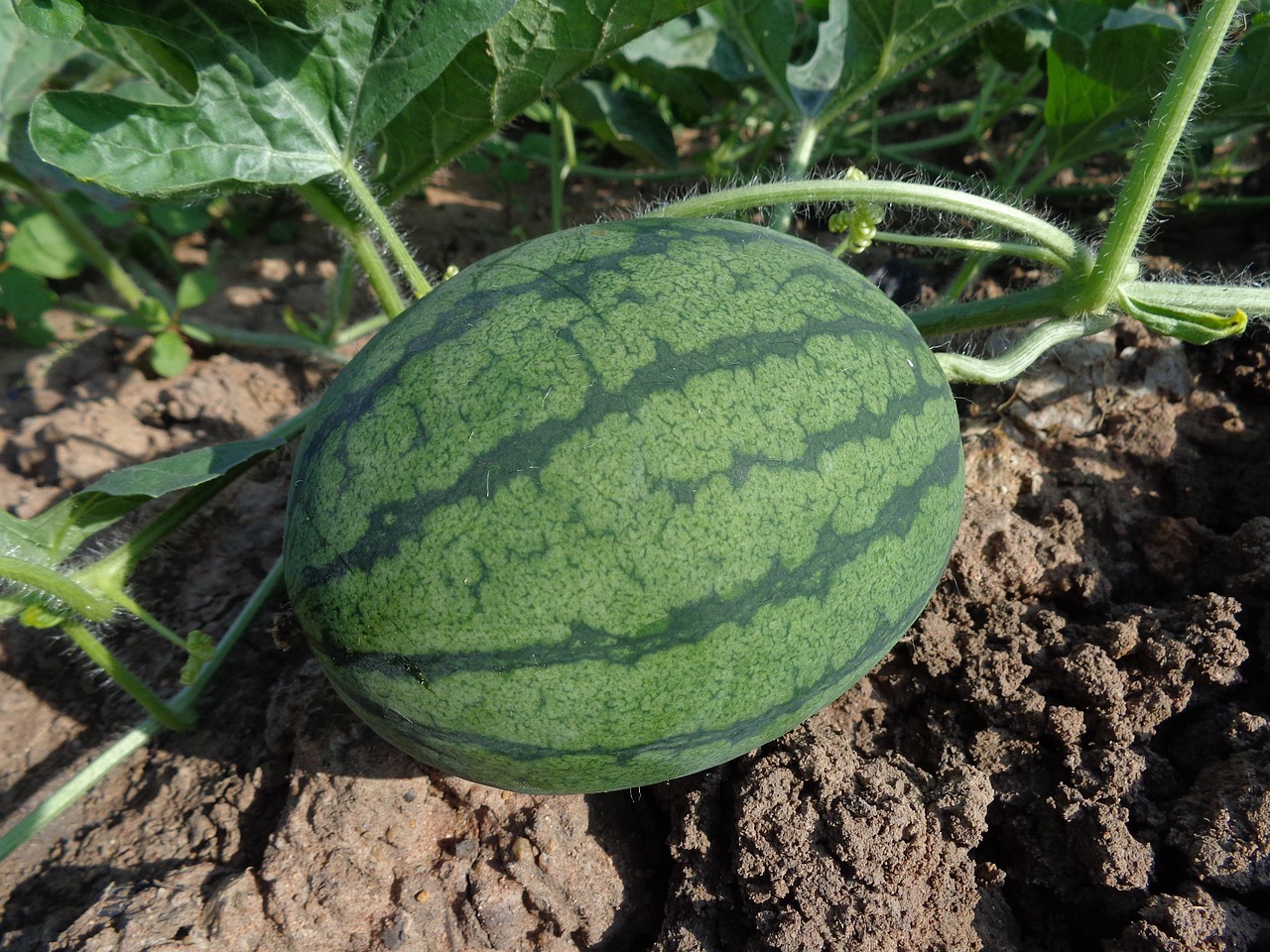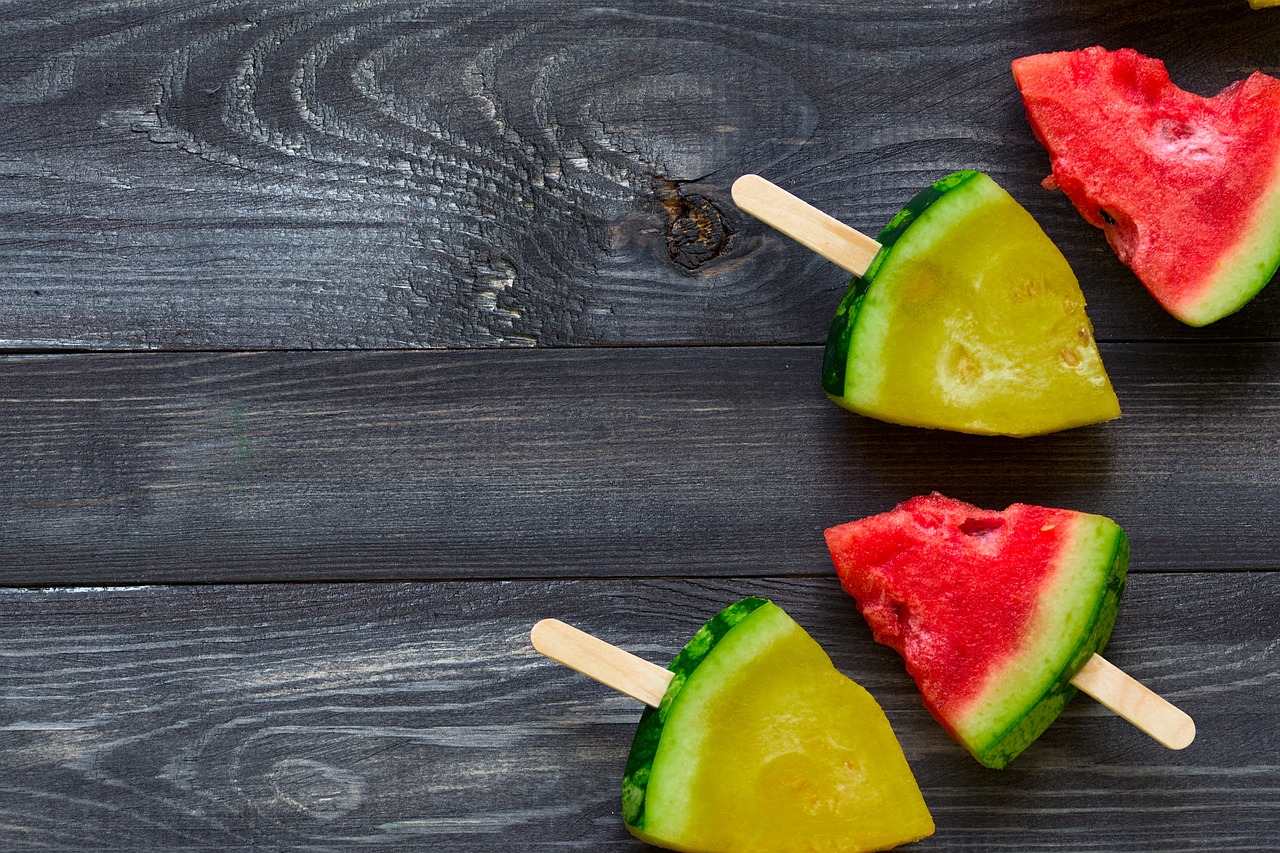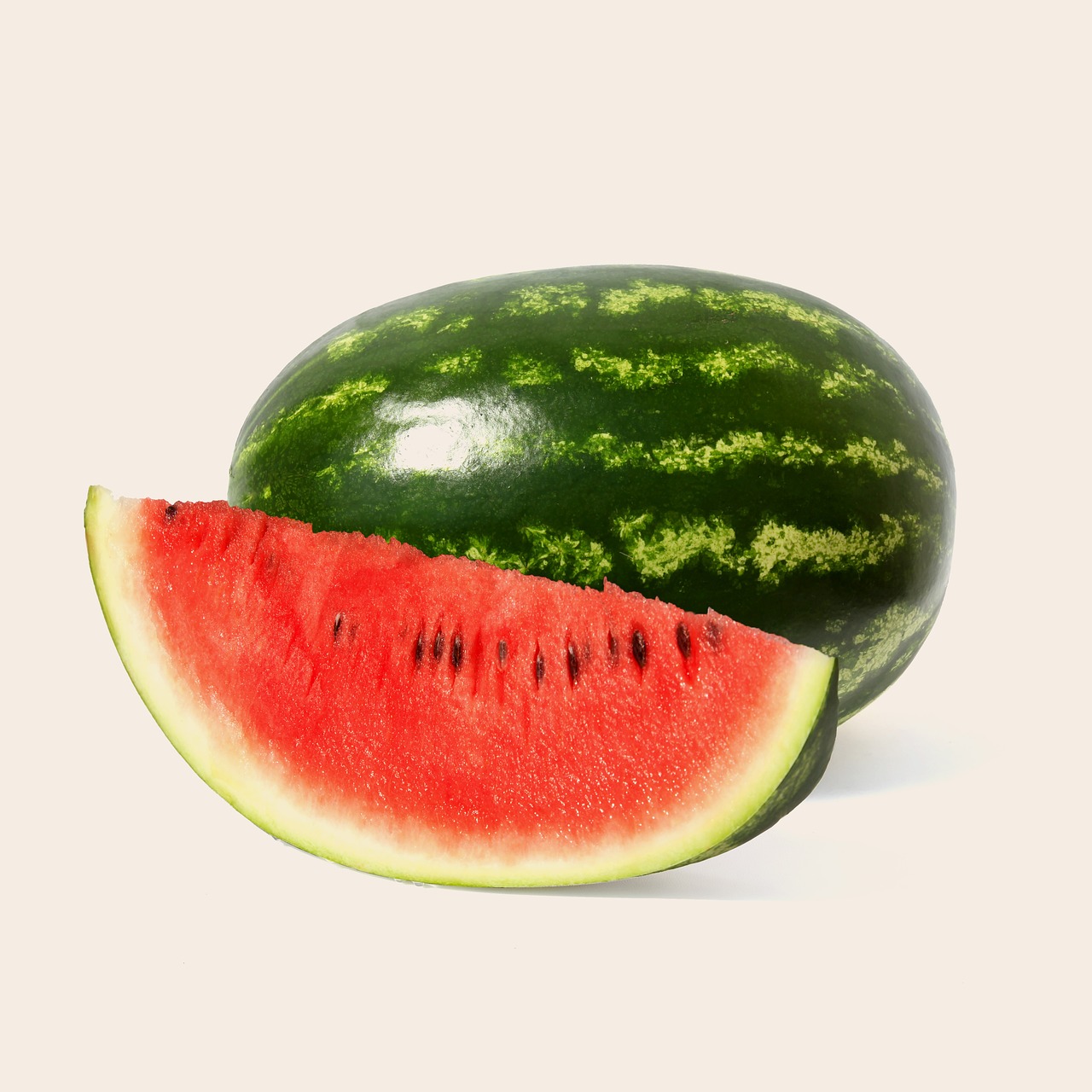Watermelons may turn yellow inside due to several reasons, including improper ripening, specific varieties, or even the effects of environmental factors. These conditions can affect the fruit’s sugar content and overall color.
Understanding Watermelon Ripening
Watermelons are a popular summer fruit known for their refreshing taste and high water content. However, discovering a yellow interior can be surprising and concerning for many consumers. The color of watermelon flesh is primarily influenced by its ripeness and variety. When a watermelon does not ripen correctly, it can present unexpected colors, such as yellow or white. Understanding why this happens can help you select the best fruit in the future.

Ripening is a crucial stage in a watermelon’s development. It occurs over several weeks as the fruit grows on the vine. During this time, sugars accumulate, and the flesh changes color from pale green to a vibrant red or pink. However, various factors can disrupt this process, leading to a less than ideal result.
Common Causes of Yellow Flesh in Watermelons
Several factors contribute to the yellow coloration in watermelon flesh. Below are some of the most common causes:
- Variety: Some watermelon varieties naturally produce yellow or orange flesh. These include varieties like ‘Yellow Crimson’ and ‘Orangeglo.’ If you purchased a watermelon from a farmer’s market or specialty store, it may belong to one of these types.
- Partial Ripeness: If a watermelon is harvested too early, it may not develop the typical red or pink color. Instead, the interior remains yellowish due to insufficient sugar development.
- Environmental Conditions: Factors such as inconsistent watering, poor soil quality, or extreme temperatures can affect how well a watermelon ripens. Stress during growth can lead to abnormal coloration.
- Pest Damage: Insects or diseases can interfere with a watermelon’s growth and ripening process. This damage may result in yellow flesh.
- Overripe Watermelon: If a watermelon is left on the vine too long, it can start to break down. While typically overripe fruit turns mushy, some varieties may also experience color changes.
The Role of Sugar Content
The flavor and sweetness of watermelon largely depend on its sugar content. When a watermelon is under-ripe or improperly stressed, it may not accumulate adequate sugars. This deficiency can cause both color changes and subpar taste.

| Condition | Effect on Color | Effect on Taste |
|---|---|---|
| Under-Ripeness | Yellow or white flesh | Bland flavor |
| Over-Ripeness | Mushy texture; fading color | Sour or off-taste |
| Pest Damage | Irregular color; dark spots | Bitter flavor |
| Varietal Differences | Yellow/orange flesh | Can be sweet and flavorful |
The sugar content varies based on the growing conditions and time on the vine. A well-ripened watermelon should have a deep red color and be sweet to taste. If you notice yellow inside your watermelon, consider these factors before dismissing it entirely.
In summary, while yellow flesh in watermelons is often viewed as undesirable, understanding the underlying causes can help you make informed choices about your fruit selection. Whether it’s due to varietal differences, ripeness issues, or environmental stressors, being aware of these factors enhances your overall experience with this delightful summer treat.
Identifying Watermelon Varieties
Understanding the different varieties of watermelons can help you better grasp why some have yellow flesh. Each variety has unique characteristics, including color, taste, and texture. Here are some common watermelon varieties:

- Seedless Watermelon: This type is popular for its convenience. The flesh is typically sweet and red, but some seedless varieties may have a yellowish tint if under-ripened.
- Crimson Sweet: Known for its vibrant red color and sweet flavor, this variety can sometimes show variations in color if not fully ripe.
- Yellow Crimson: This variety is intentionally bred to have bright yellow flesh. It offers a sweet flavor similar to traditional red watermelons.
- Orangeglo: This watermelon has orange flesh and is known for its sweet taste. It is a great alternative to red-fleshed varieties.
- Moon and Stars: Recognized for its unique appearance, this variety has dark green skin with yellow spots and can have yellow flesh when under-ripe.
The Importance of Growing Conditions
The conditions under which watermelons grow significantly impact their color and taste. Factors such as soil type, weather, and care during growth can lead to variations in fruit quality. Below are key aspects of growing conditions that affect watermelon:
- Soil Quality: Nutrient-rich soil is essential for optimal growth. Watermelons require well-drained, sandy loam soil with plenty of organic matter.
- Watering Practices: Consistent watering helps maintain even growth. Irregular watering can lead to stress, affecting the fruit’s color and taste.
- Sunlight Exposure: Watermelons need full sun for at least 6-8 hours daily. Insufficient sunlight can hinder ripening and lead to yellow flesh.
- Pest and Disease Management: Keeping pests at bay is crucial. Infestations can damage the fruit’s growth, leading to abnormal coloration.
Recognizing Signs of Ripeness
Learning how to identify ripe watermelons can prevent purchasing fruits that may be yellow inside. Here are some tips to determine ripeness:
- Uniform Color: Look for a consistent color on the outer rind. A dull finish indicates ripeness.
- Field Spot: Check the spot where the watermelon rested on the ground. A creamy or yellow field spot suggests ripeness.
- Sound Test: Tap the watermelon gently. A ripe watermelon should produce a deep, hollow sound.
- Weight: Ripe watermelons feel heavy for their size due to their high water content.
Pest and Disease Impact on Watermelon Color
Pests and diseases can significantly affect the development of watermelons, leading to unexpected colors and tastes. Here are some common issues that growers face:

| Pest/Disease | Symptoms | Impact on Color |
|---|---|---|
| Aphids | Stunted growth; curling leaves | Can cause discoloration and reduced sugar levels |
| Cucumber Beetles | Wilting; reduced fruit size | May lead to pale or yellowish flesh |
| Damping Off Disease | Soggy seedlings; plants die off | Affects overall crop health, potentially leading to color changes in fruit |
| Bacterial Wilt | Wilting; yellowing leaves | Affects fruit quality, may cause yellowing inside |
Understanding these factors can help consumers make informed choices when selecting watermelons at the market or grocery store. Identifying potential issues early can also assist growers in ensuring a healthy crop that produces vibrant, flavorful fruit.
If you encounter a yellow watermelon, consider these factors before deciding whether it is worth consuming or discarding. The variety, growing conditions, and ripeness all contribute to the overall quality of the fruit.
Nutrition and Health Benefits of Watermelon
Despite concerns about yellow flesh, watermelon remains a nutritious fruit with numerous health benefits. It is low in calories and high in water content, making it an excellent choice for hydration. Understanding the nutritional profile of watermelon can help consumers appreciate its value, even if the color is unexpected.
| Nutrient | Amount per 1 cup (152g) | Benefit |
|---|---|---|
| Calories | 46 | Low-calorie option for snacking |
| Water Content | 92% | Helps keep you hydrated |
| Vitamin C | 21% of the Daily Value (DV) | Supports immune function and skin health |
| Vitamin A | 18% of the DV | Promotes eye health and skin integrity |
| Lycopene | 6.5 mg | Antioxidant that may reduce the risk of certain cancers |
Taste and Culinary Uses of Yellow Watermelon
The taste of watermelon, regardless of its color, can vary significantly based on ripeness and variety. Yellow watermelons often have a distinct flavor profile that some people enjoy. Here are some culinary uses for both traditional red and yellow watermelons:
- Salads: Both types of watermelon can be added to fruit salads or savory salads to enhance flavor and color.
- Smoothies: Blending watermelon into smoothies provides a refreshing base. Yellow watermelon can add a unique twist to your drink.
- Salsas: Dicing watermelon and mixing it with onions, cilantro, and lime juice creates a fresh salsa perfect for grilled meats.
- Desserts: Watermelon can be used in sorbets or frozen pops for a summertime treat. Yellow watermelon offers a different visual appeal.
- Juices: Freshly juiced watermelon is hydrating and delicious. Mixing yellow watermelon with other fruits can create vibrant juice blends.
Storage Tips for Watermelons
Proper storage is essential to maintain the quality of watermelons, whether they are red or yellow inside. Here are some tips for storing watermelons effectively:
- Whole Watermelon: Store whole watermelons at room temperature if you plan to consume them within a week. If you need to keep them longer, refrigerate them.
- Cut Watermelon: Once cut, store watermelon in an airtight container in the refrigerator. This helps retain moisture and flavor.
- Avoid Excess Moisture: Keep the fruit dry to prevent mold growth. Moisture can lead to spoilage.
- Consume Promptly: Cut watermelon should be eaten within three to five days for the best taste and quality.
Why It’s Important to Experiment with Different Varieties
Trying various watermelon types can enhance your culinary experience. Each variety offers unique flavors, textures, and appearances. Experimenting with different types can lead to exciting new recipes and flavor combinations. Consider the following:
- Flavor Exploration: Different varieties have distinct sweetness levels. Some are more refreshing, while others may have a richer taste.
- Cultural Significance: In some cultures, specific watermelon varieties hold traditional significance during celebrations and festivals.
- Culinary Creativity: Using a mix of watermelon types in dishes can create visually appealing presentations and diverse flavors.
By expanding your palate and trying yellow watermelons alongside traditional red ones, you may discover new favorites that enhance your summer meals and gatherings.
Exploring Watermelon Pairings and Recipes
Watermelons, whether red or yellow inside, can be paired with various ingredients to create refreshing dishes. Understanding how to incorporate this fruit into your meals can elevate your culinary experience. Here are some delightful pairings and recipe ideas:
- Cheese: Watermelon pairs beautifully with cheeses like feta or goat cheese. The creaminess of the cheese balances the sweetness of the fruit.
- Herbs: Fresh herbs such as mint, basil, or cilantro enhance the flavor of watermelon. Adding herbs to salads or salsas can create a refreshing twist.
- Spicy Elements: Adding chili powder or jalapeños can provide a spicy contrast to the sweetness of watermelon. This combination works well in salsas or as a topping on grilled dishes.
- Nuts: Toasted nuts like almonds or walnuts add crunch and depth to watermelon salads. This combination creates a satisfying texture.
- Citrus: Mixing watermelon with citrus fruits such as lime or orange can enhance its flavor. A citrus dressing on a fruit salad brings out the best in watermelon.
Gardening Tips for Growing Watermelons
If you are interested in growing your own watermelons, understanding the best practices can lead to a fruitful harvest. Here are some gardening tips:
- Choose the Right Variety: Select watermelon varieties that suit your climate and soil conditions. Local nurseries can offer advice on the best options.
- Soil Preparation: Watermelons thrive in well-drained, nutrient-rich soil. Amend soil with compost to enhance fertility.
- Planting: Plant seeds after the last frost when the soil is warm. Space them adequately to allow for growth.
- Watering: Consistent watering is crucial during the growing season. Aim for deep watering to encourage strong root development.
- Pest Control: Keep an eye out for pests and diseases. Use organic methods whenever possible to protect your plants.
Final Thoughts
Understanding why watermelons can be yellow inside involves looking at several factors, including variety, ripeness, and growing conditions. While yellow flesh may initially seem concerning, it can often be a sign of specific watermelon types or variations in growth conditions. Watermelon remains a nutritious and delicious fruit, offering numerous health benefits and culinary possibilities.
As you experiment with different types of watermelons, including those with yellow flesh, you may discover new flavors and enjoy unique recipes. Embracing variety not only enhances your palate but also allows you to appreciate the diversity of this beloved summer fruit.
Whether you choose to buy watermelons from the store or grow them in your garden, being informed about their characteristics will enhance your overall experience. Enjoy this refreshing fruit in various dishes and celebrate the delightful taste of watermelon during the warm months.
